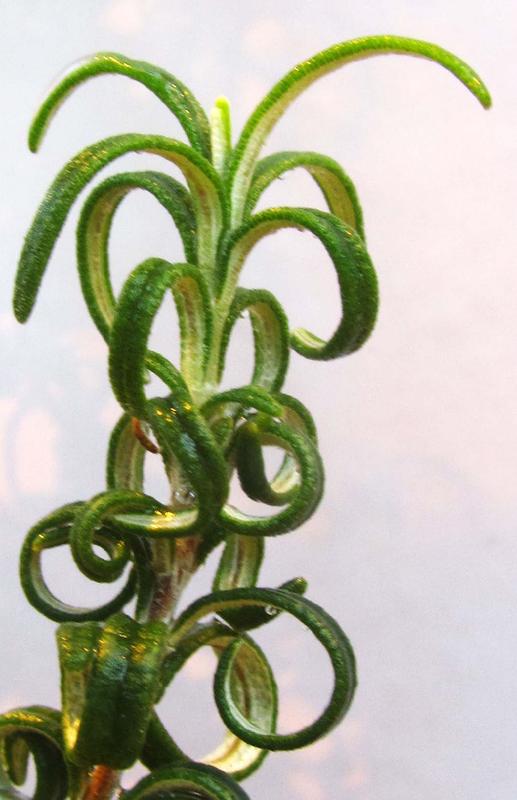Nature communications: From the plant to the microreactor

Carnosic acid is still obtained from rosemary. However, biotechnological production processes could be developed soon. Photo: IPB
Carnosic acid is a natural antioxidant that is found in the leaves of rosemary and sage. It is used worldwide as a preservative and flavor in meat products, oils, fats, sauces and animal feed. Carnosic acid, for which the demand is steadily increasing, is still extracted from rosemary plants, which grow slowly.
Dried leaves of sage or rosemary contain at most 2.5 percent of carnosic acid, necessitating a large amount of plant material to ensure the production of the antioxidant on industrial scale. Furthermore, the complex structure of carnosic acid makes an industrial synthetic process unrealistic.
The biosynthesis of carnosic acid within the plant takes place in several reaction steps, which are catalyzed by different enzymes. The enzyme that catalyzes the last step of the reaction chain had not yet been discovered. This knowledge-gap has now been closed by the IPB researchers.
They discovered an additional, previously unknown intermediate and also new enzymes, which were described and characterized by them. With the knowledge of all involved reaction partners, the scientists were able to introduce the genes coding for the corresponding enzymes into yeast cells and make them produce carnosic acid. This is the first step in the development of a biotechnological production process for the antioxidant.
Carnosic acid is also the starting material for the biosynthesis of many other phenolic diterpenes, which act as bioactive substances against inflammation, cancer and various neurodegenerative diseases.
Also for this reason, it will be interesting to produce carnosic acid in the future with biotechnology-based processes and thus independently of climate fluctuations, soil quality and harvest yields.
Publication:
Ulschan Scheler, Wolfgang Brandt, Andrea Porzel, Kathleen Rothe, David Manzano, Dragana Bozic, Dimitra Papaefthimiou, Gerd Ulrich Balcke, Anja Henning, Swanhild Lohse, Sylvestre Marillonnet, Angelos K. Kanellis, Albert Ferrer & Alain Tissier. Elucidationof the bioynthesis of carnosic acid and its reconstitution in yeast. Nature Communications 7: 12942, doi:10.1038/ncomms12
http://www.nature.com/articles/ncomms12942
Contact:
Prof. Alain Tissier
Leibniz Institute of Plant Biochemistry
Tel.: +49 345 5582 1500
alain.tissier(at)ipb-halle.de
http://www.nature.com/articles/ncomms12942
http://www.ipb-halle.de/en/public-relations/news/article-detail/von-der-pflanze-…
Media Contact
All latest news from the category: Life Sciences and Chemistry
Articles and reports from the Life Sciences and chemistry area deal with applied and basic research into modern biology, chemistry and human medicine.
Valuable information can be found on a range of life sciences fields including bacteriology, biochemistry, bionics, bioinformatics, biophysics, biotechnology, genetics, geobotany, human biology, marine biology, microbiology, molecular biology, cellular biology, zoology, bioinorganic chemistry, microchemistry and environmental chemistry.
Newest articles

Bringing bio-inspired robots to life
Nebraska researcher Eric Markvicka gets NSF CAREER Award to pursue manufacture of novel materials for soft robotics and stretchable electronics. Engineers are increasingly eager to develop robots that mimic the…

Bella moths use poison to attract mates
Scientists are closer to finding out how. Pyrrolizidine alkaloids are as bitter and toxic as they are hard to pronounce. They’re produced by several different types of plants and are…

AI tool creates ‘synthetic’ images of cells
…for enhanced microscopy analysis. Observing individual cells through microscopes can reveal a range of important cell biological phenomena that frequently play a role in human diseases, but the process of…





















